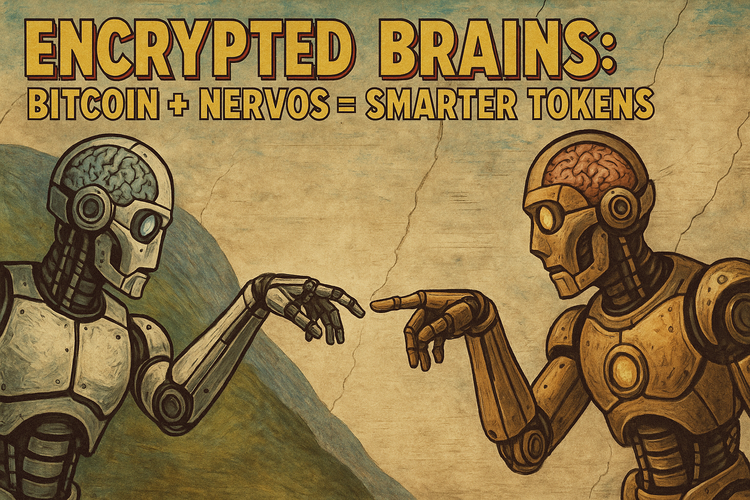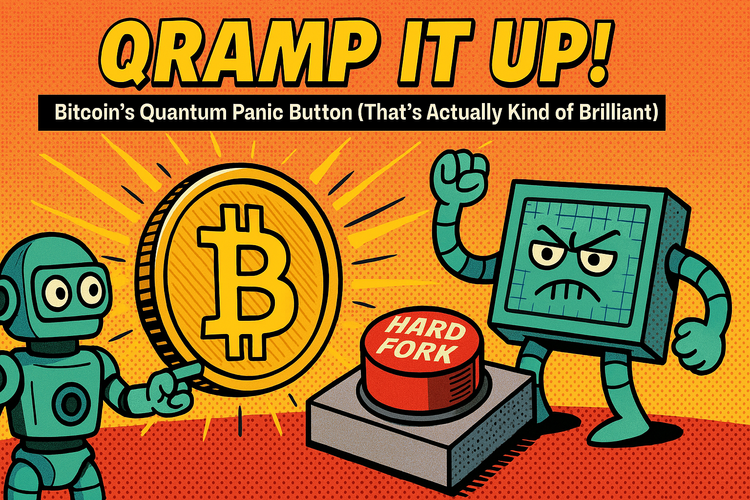Xiezhi: Crypto’s New BS Detector for Exchanges

Remember Mt. Gox? That absolute disaster where a crypto exchange lost 744,000 BTC and nobody noticed until it was way too late? It highlighted a huge problem: how do we know if these exchanges actually have the funds they say they do?
But wait—Xiezhi just rolled in, looking like the blockchain equivalent of a detective with a magnifying glass and a lie detector. 🕵️♂️🔍
Is this the answer to crypto transparency we’ve been waiting for? Let’s break it down...
Proof of Solvency: Show Me the Coins! 💰
Crypto exchanges love flexing about their reserves, but how do we actually know they have the funds? Just because an exchange says they have enough BTC to cover withdrawals doesn’t mean they do.
Here’s where proofs of solvency come in. Think of it as a "trust me, bro"—but with cryptographic receipts.
🚀 The concept?
- The exchange proves it has enough crypto to cover user balances.
- It does this without revealing individual holdings or its full balance sheet.
- No shady math. No creative accounting. Just cold, hard, verifiable proof.
💡 Sounds great, right? The problem is that most solvency proofs suck—they’re either too slow, too big, or don’t work well with Bitcoin’s security model.
The Bitcoin Roadblock: Math vs. Reality 🧮
Here’s the issue—Bitcoin’s cryptography (secp256k1) is built differently from the fancy zero-knowledge proof tech that makes these solvency proofs efficient.
Most zk-proof systems use pairing-based cryptography (think bls12-381). Bitcoin doesn’t. So these proofs end up being:
1️⃣ Slow 🚶 (nobody has time for that)
2️⃣ Huge 🏗️ (who wants to verify a gigabyte-sized proof?)
3️⃣ Clunky 🛠️ (doesn't integrate smoothly)
And that’s why most Bitcoin exchanges still rely on the old-school method: publishing a bunch of wallet addresses and yelling, "Look! We have funds!" 🙄
Xiezhi: The Crypto Lie Detector Arrives
Enter Xiezhi (named after a mythical creature that sniffs out deception 🦄🔎). This new system is built to actually work with Bitcoin and generate fast, lightweight, verifiable proofs of solvency.
🔥 Why Xiezhi is different:
✅ Fast: Proofs generate in minutes, not hours.
✅ Small: The proof size is tiny—just a few kilobytes.
✅ Easy to verify: Anyone can check it in seconds.
Translation?
Exchanges can no longer fake solvency, and users don’t have to blindly trust them anymore. This is real transparency, backed by cryptography instead of marketing.
How It Works (Without Melting Your Brain) 🤯
Alright, let’s keep it simple. Xiezhi does three big things:
1️⃣ Bridges the gap between Bitcoin’s cryptography and zero-knowledge proofs. It makes Bitcoin “talk” to zk-proofs without breaking everything.
2️⃣ Summarizes an exchange’s total assets and liabilities into a single proof—no need to reveal private keys or account balances.
3️⃣ Lets users verify their individual balances are included—so you know you’re accounted for without exposing your holdings.
💡 Think of it like this:
Instead of an exchange publishing all their wallets, they generate a cryptographic receipt proving they have more BTC than customer deposits. No fluff. Just facts.
The Catch? (Because Nothing’s Perfect) 🤔
Alright, Xiezhi isn’t magic. It still has some trade-offs:
⚠️ It needs a trusted setup – Basically, a one-time cryptographic ceremony to initialize the system. Not a huge deal, but something to note.
⚠️ It requires public keys – The system needs all user public keys to verify balances correctly.
⚠️ Works best with single-key wallets – Multi-sig setups might complicate things.
Not ideal, but still lightyears ahead of the current proof-of-reserve methods (cough “Just trust us” cough).
Notoko’s Take: Exchanges Are Out of Excuses
So, will exchanges adopt Xiezhi?
Look, crypto history says they’ll resist transparency until forced. Nobody wants to make it easy for users to verify their solvency—because what if they don’t actually have the funds? 👀
But as regulation heats up and users demand more transparency, systems like Xiezhi will become mandatory for any exchange that wants to stay legit.
🔮 Prediction:
- Some exchanges will adopt Xiezhi voluntarily (the smart ones).
- Others will be forced to use it when regulators come knocking.
- And a few (cough bad actors cough) will keep playing the “we totally have reserves” game—until they don’t.
At the end of the day, Xiezhi is a win for crypto users. It makes it harder for exchanges to lie and easier for you to verify your funds are safe.
💡 Subscribe to Notoko Bytes for more crypto chaos straight to your inbox! 🚀

Want to feature your brand on Notoko Bytes? 🚀 Contact us at ctrascend@gmail.com for sponsored posts!
Disclaimer
*The information and analysis provided in this article are intended for educational and informational purposes only and should not be considered as financial, investment, or professional advice. While our team strives to ensure the accuracy and reliability of the content, we make no representations or warranties of any kind, express or implied, about the completeness, accuracy, reliability, suitability, or availability of the information presented.
The content within this article may include opinions and forward-looking statements that involve risks and uncertainties. The blockchain and cryptocurrency markets are highly volatile, and past performance is not indicative of future results. Any reliance you place on the information presented is strictly at your own risk. Before making any investment decisions, we highly recommend consulting with a qualified financial advisor or conducting your own thorough research.
By accessing and using the information provided in this article, you acknowledge and agree that neither the authors, publishers, nor any other party involved in the creation or delivery of the content shall be held liable for any direct, indirect, incidental, consequential, or punitive damages, including but not limited to loss of profits, goodwill, or data, arising out of your use or inability to use the information provided or any actions you take based on the information contained within this section.*





